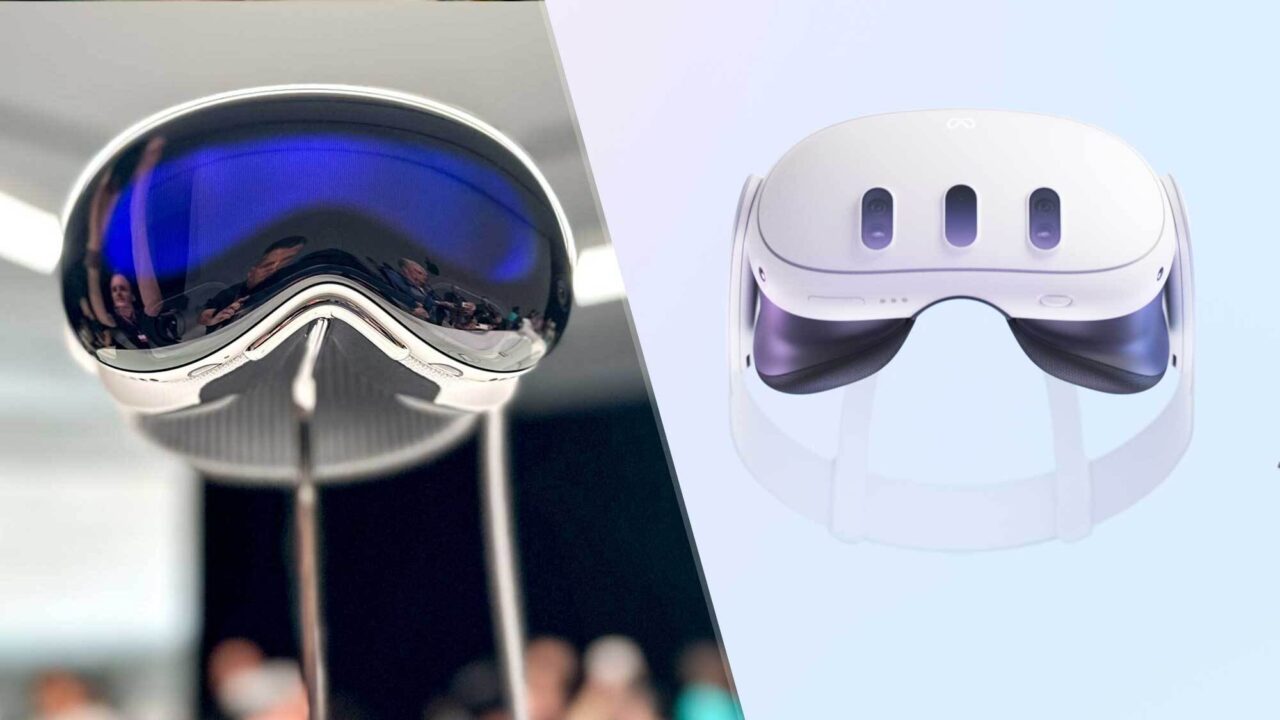
In the ever-evolving landscape of virtual reality (VR) and augmented reality (AR), two standout devices have captured the attention of enthusiasts and tech analysts alike: Meta Quest 3 and Apple Vision Pro. Each offers distinct features tailored to different user needs, making the choice between them more about personal preference and intended use than a clear-cut decision on overall superiority.
Key Highlights:
- Apple Vision Pro is positioned as a high-end computing product with features like 1TB of storage, 16GB of RAM, and the ability to serve as a 4K virtual display for Mac, indicating its focus on a seamless integration into the Apple ecosystem and its utility as a standalone computing device.
- Interaction Modes on the Vision Pro are notably innovative, relying on eyes, hands, and voice for navigation and control, suggesting a more intuitive user experience that steps away from traditional controllers.
- Personalization and Accessibility are emphasized through an initial setup that includes a 3D face scan for creating a digital avatar, enhancing the teleconferencing experience by attempting to bridge the gap between virtual presence and physical reality.

The Apple Vision Pro has been described as a significant leap forward in immersive digital experiences. It doubles as a 4K Mac virtual display and supports interactions through eyes, hands, and voice, offering a potentially more natural and intuitive user interface compared to traditional VR controllers. Its setup involves a 3D face scan for personalized avatars, aiming to enhance teleconferencing by recreating users’ presence in digital meetings. Despite its innovation, challenges such as the need for external light for hand tracking and comfort issues with the face seal have been noted. These elements suggest the Vision Pro’s ambition to integrate deeply with users’ digital lives, positioning it as a versatile tool for both work and entertainment.
Unfortunately, due to access restrictions, detailed information on the Meta Quest 3 from direct sources was not retrievable within this session. However, based on general knowledge and industry standards, Meta’s Quest line has traditionally emphasized gaming and entertainment, offering a balance of performance and accessibility. The Quest devices are known for their wireless freedom, comprehensive game library, and community support, making them favorites among VR enthusiasts looking for an immersive experience without the need for a PC connection.
The Meta Quest line, including the anticipated Quest 3, is likely to continue its focus on providing an immersive gaming and entertainment experience. Features such as high-resolution displays, intuitive control systems, and a vast library of content are expected to remain central to its appeal. The Quest’s wireless design and self-contained processing power have traditionally offered a significant advantage for users looking for a portable and convenient VR experience.
conclusion
The choice between Meta Quest 3 and Apple Vision Pro largely depends on what you’re looking for in a VR/AR device. If you’re entrenched in the Apple ecosystem and seeking a device that extends the functionality of your existing Apple products, offers innovative interaction methods, and leans towards professional and creative applications, the Vision Pro may be the right choice. On the other hand, if your focus is on gaming, entertainment, and a more straightforward VR experience, the Meta Quest 3 could offer the accessibility and content library to meet your needs. Ultimately, both devices push the boundaries of virtual and augmented reality, but cater to different user priorities and experiences.






















